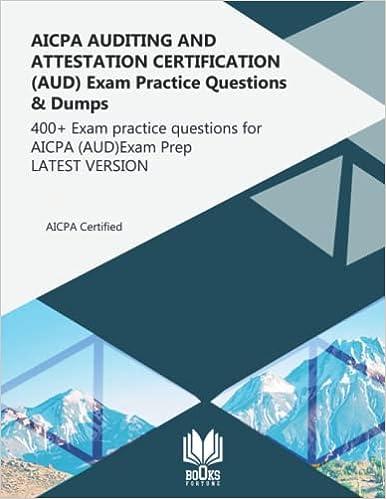Question
A taxpayer spends well over $100 each month on public transit, and the taxpayers employer is implementing a new policy that gives each employee a
A taxpayer spends well over $100 each month on public transit, and the taxpayers employer is implementing a new policy that gives each employee a $100 transit pass each month. However, to alleviate the cost of the new perk, the employer plans to reduce the employees pretax salary by $1,700. Assuming the taxpayers marginal tax rate is 24%, is the taxpayer better off under the new policy? Hint: Dont forget to incorporate the employee portion of FICA taxes in your calculation.
Yes
No
Allie bought a $1,000 computer this year that she uses for both personal and business purposes. The computer was used 750 hours for business purposes and 250 hours for personal purposes. The computer is a five-year asset subject to the half-year convention. She did not elect to immediately expense the asset under 179 nor did she take bonus depreciation. How much depreciation can Allie claim on the computer this year?
|
| $50 | |
|
| $100 | |
|
| $150 | |
|
| $200 |
A taxpayers delivery van with an adjusted basis of $5,000 was stolen. Luckily, the taxpayer had comprehensive insurance on the van so the taxpayer received $8,000 to cover the loss (i.e., it was valued at $8,000 at the time of theft). The taxpayer purchased a replacement van for $10,000. What gain does the taxpayer recognize and what basis would the taxpayer have in the replacement van?
|
| Gain: $0; Basis: $7,000 | |
|
| Gain: $0; Basis: $10,000 | |
|
| Gain: $3,000; Basis: $8,000 | |
|
| Gain: $3,000; Basis: $10,000 |
A single taxpayer has $434,550 of ordinary income and receives a qualifying dividend of $2,000. What is the amount of federal income tax on the dividend? (Preferential tax rate brackets can be found in the Appendix. Ignore the net investment income tax.)
|
| 300 | |
|
| 350 | |
|
| 400 | |
|
| 746 |
A taxpayer is currently in the 32% tax bracket and expects to be in the 15% bracket in retirement. The taxpayer wants to have the most after-tax income available in retirement as possible. The taxpayer is deciding what kind of IRA contribution to make. What would you recommend to the taxpayer?
|
| Contribute to a traditional IRA | |
|
| Contribute to a Roth IRA | |
|
| Contribute to a traditional IRA and reinvest the tax savings from the contribution deduction | |
|
| Contribute to a Roth IRA and reinvest the tax savings from the contribution deduction |
Step by Step Solution
There are 3 Steps involved in it
Step: 1

Get Instant Access to Expert-Tailored Solutions
See step-by-step solutions with expert insights and AI powered tools for academic success
Step: 2

Step: 3

Ace Your Homework with AI
Get the answers you need in no time with our AI-driven, step-by-step assistance
Get Started


